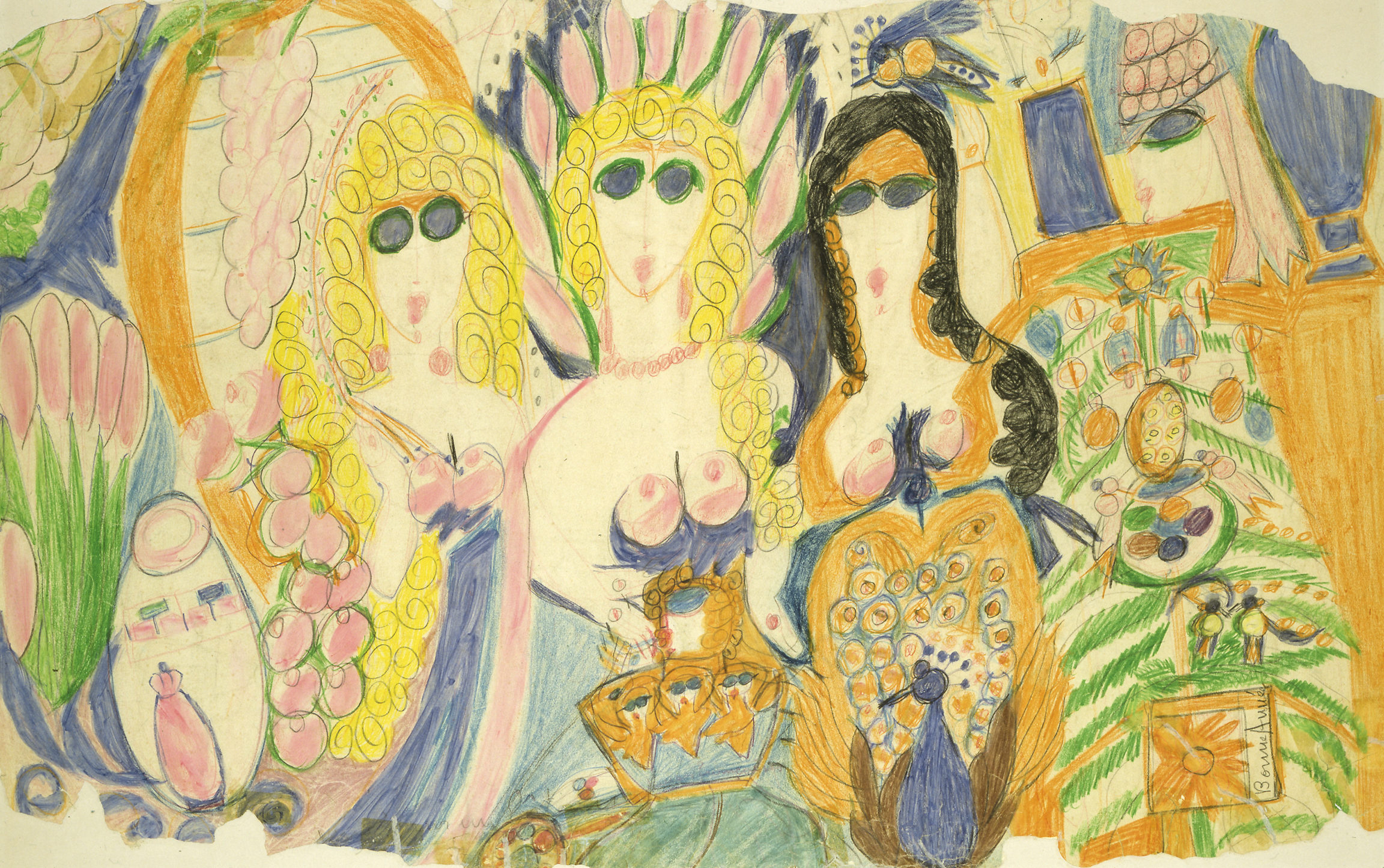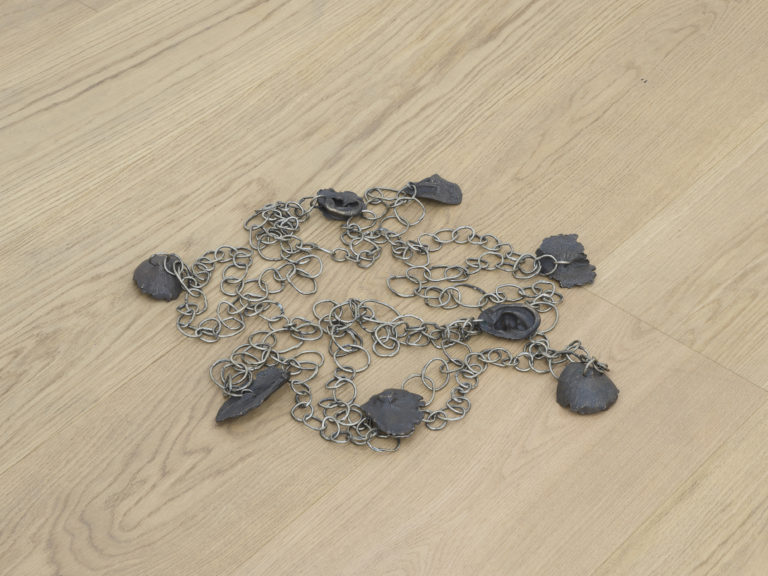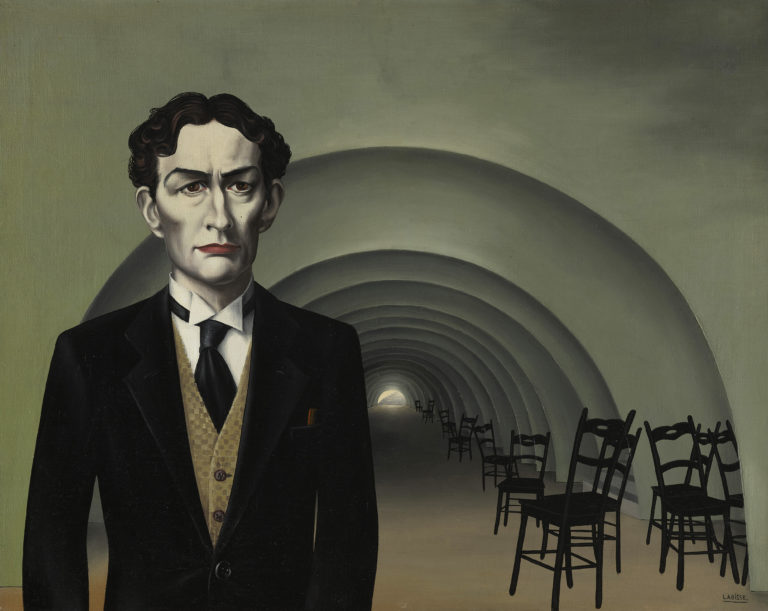Bibliography
Jacqueline Porret-Forel, assisted by Céline Muzelle, Aloïse Corbaz (1886–1964). Catalogue raisonné électronique, Chigny Fondation Aloïse, Zürich, Institut suisse pour l’étude de l’art, 2012, www.aloise-corbaz.ch: n. 412.01.
Jacqueline Porret-Forel and Céline Muzelle, with foreword by Pascale Marini, Sarah Lombardi and Catherine Lepdor, Aloïse. Le ricochet solaire, Milan, 5 Continents Editions, 2012.
Jacqueline Porret-Forel, Aloïse et le théâtre de l’univers, Geneva, Éditions d’Art Albert Skira, 1993.

![Giuseppe Penone, Svolgere la propria pelle (Pressione su carta)<br>(Developing your own Skin [Pressure on Paper]), 1974](https://www.mcba.ch/wp-content/uploads/2019/01/2018-026_PENONE_num4000_nr-768x629.jpg)


Aloïse did not see herself as an artist but as a scribe: ‘I copy what I hear’, she wrote. Interned in an asylum for more than forty years, she set out to represent the world that was revealed to her. She claimed to have gained access to it via a ‘big viewing glass’ that enabled her to ‘dash down big paintings’. Some of her figures came to her in her dreams, and she would speak with them as she drew them. ‘Mlle [?], you are not at all as I saw you that night.’
Aloïse’s compositions work with an extensive repertoire of figures, animals and places derived from high and popular culture, from literature, music, philosophy and alchemy. How she acquired all this knowledge is something of a mystery. Formal resemblances, word play and assonance weave a network in which we quickly start to observe certain constants running across the territory of her ideas.
In this drawing we find all the artist’s usual figurative procedures: the saturation of space, the dense interlocking of simple forms, emphatic contours, large zones of lively, fresh colour, absence of depth, hieratic figures, and a scale built around the importance of the figures. Here, three bare-bosomed women and a pope coiffed with a tiara with long lappets emerge from a setting of leaves, flowers, bunches of grapes and birds. The associations presented here work as if following a repeated ‘it’s like’: for example, the women’s breasts are like camellias, like bunches of grapes, and a painter’s palette is like the nest of multi-coloured eggs decorating the Christmas tree, like the eyes of a peacock’s tail, or again like birds’ crests. The central theme of the painting is made even more explicit by the brush held by the pope, and above all by the palette held by the small kneeling man in the centre, who is kissing the hand of the most marvellous of the three goddesses.